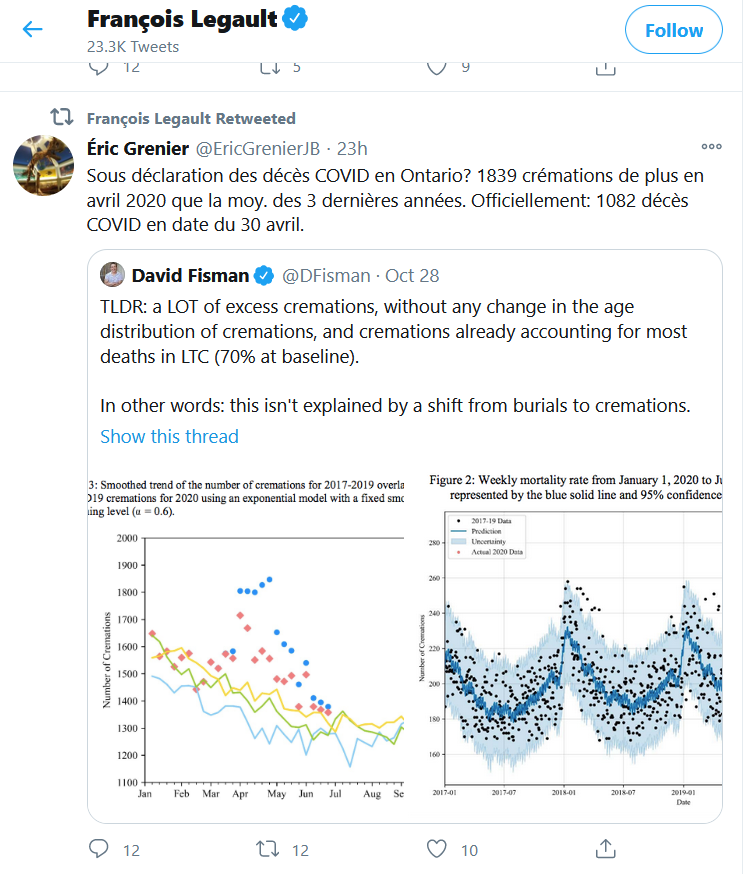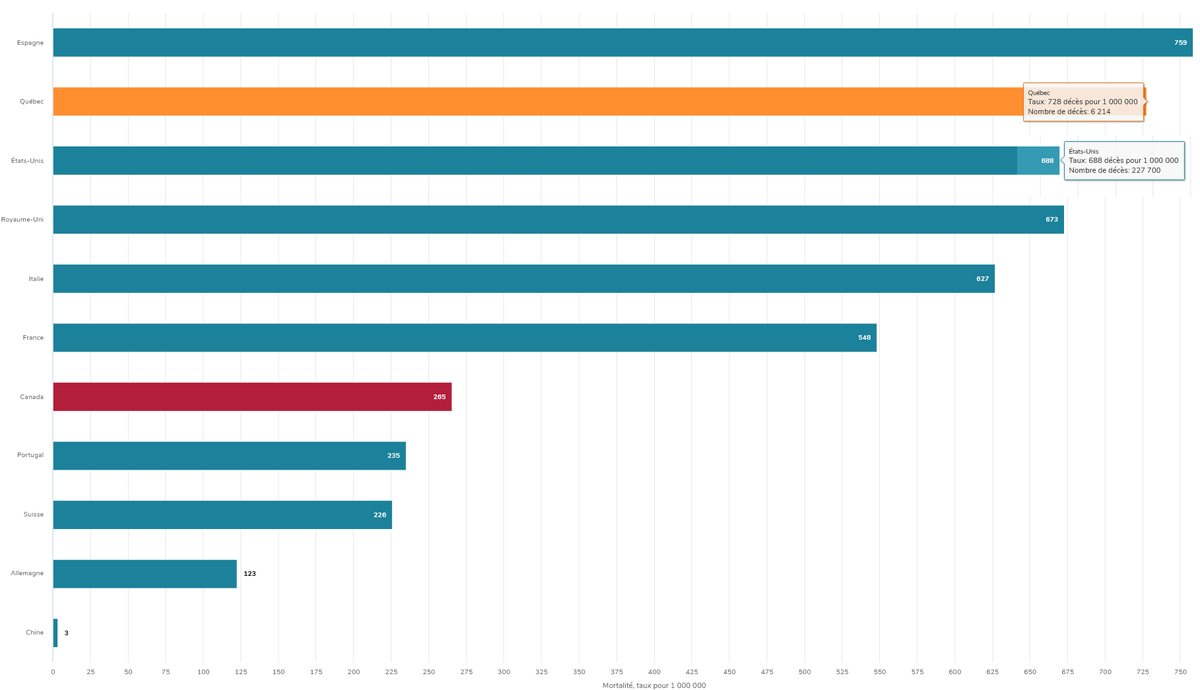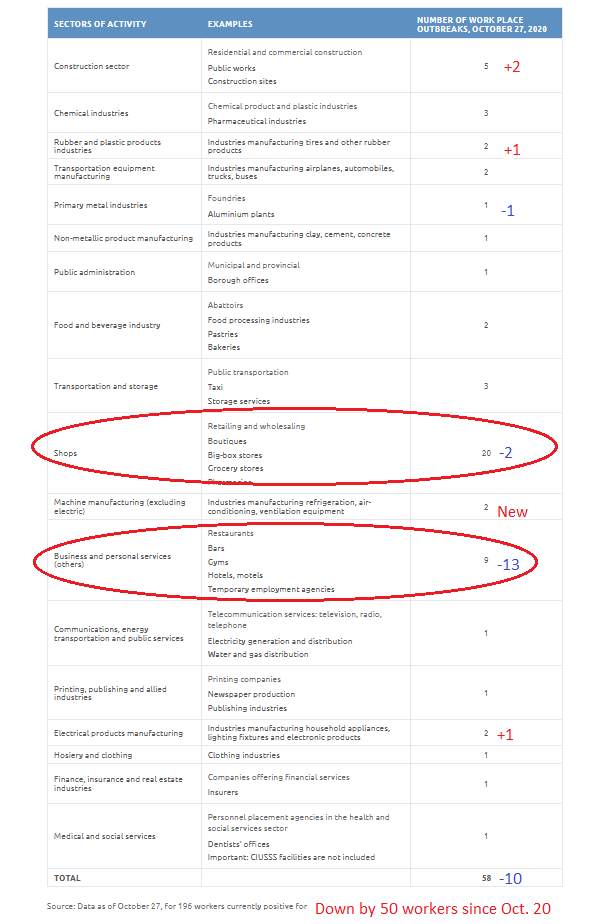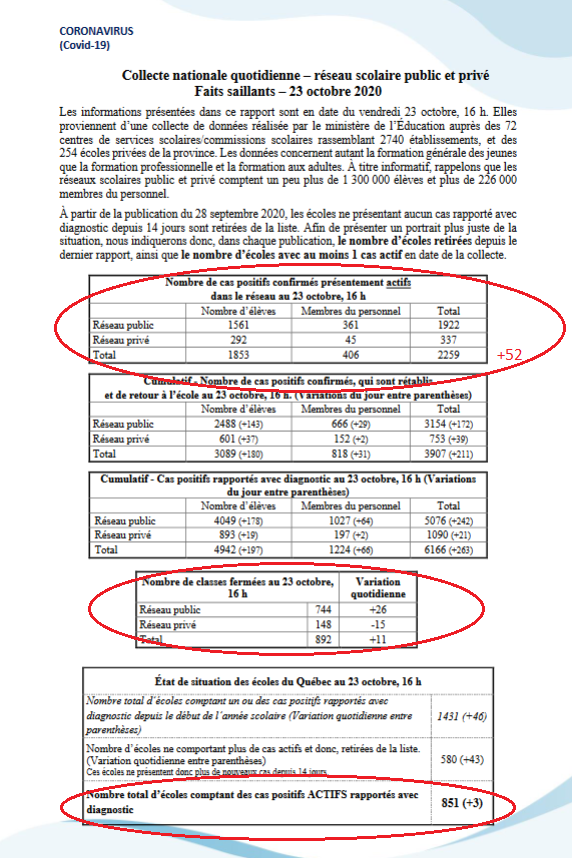
1) Quebec Premier François Legault elaborated on Thursday about his endorsement of two tweets suggesting that Ontario might be under-reporting its #COVID19 deaths. In this thread, I will fact-check this assertion and show why it is inaccurate.
2) Legault was responding to a question by CTV Montreal reporter @KellyGreig to explain why he retweeted a couple of tweets on this issue. The first was a retweet of a comment by @EricGrenierJB, editor-in-chief of L’actualité médicale regarding one by an Ontario epidemiologist.
3) In the original tweet, epidemiologist David Fisman was alluding to a July study, titled, “An analysis of mortality in Ontario using cremation data.” Fisman tweeted there was “a LOT of excess cremations.” But Fisman did not suggest Ontario was under-reporting #COVID19 deaths. 

4) Grenier retweeted Fisman’s tweet, and posed the following rhetorical question: “Under declaration of COVID deaths in Ontario?” The Premier then retweeted Grenier’s tweet. He also retweeted a reply to Grenier’s tweet by Stéphane Gobeil, one of his own advisers.
5) In that reply, Gobeil asked the question: “70% more deaths than announced? That’s really a lot, I find.” So what was the motivation of the Premier in retweeting those tweets? Does he really believe that Ontario is under-reporting its #COVID19 deaths?”
6) Here is what Legault stated at his news conference on Thursday: “What I have to say is that we have to be prudent. I don’t like to hear at all (Liberal leader) Mrs. (Domnique) Anglade every day saying Quebec was the worst place in the world for the first wave.”
7) “I’ve read this report,” Legault said. Fisman’s original tweet contains charts drawn from a study by researchers at the University of Toronto, Western University, the Institute for Clinical Evaluative Sciences and the Office of the Chief Coroner of Ontario.
8) “What this report is showing is that until June 30, when you look at the cremations, we know that about 70 per cent of the people are getting cremations,” Legault sought to explain of the mortality trend in Ontario in 2020.
9) Legault then added “that when you compare the number of deaths with the average of the preceding three years, there’s a lot more deaths than what was reported for deaths of COVID-19. So I’m just saying, be prudent.”
10) I reached out to David Fisman, who wrote the original tweet. I also read the study (which everyone can peruse below). I also scanned the news media coverage of that study at the time. medrxiv.org/content/10.110…
11) I asked Fisman if, in fact, he was suggesting that Ontario was under-reporting its #COVID19 deaths, and that the cremations proved this. Fisman responded that he was tweeting about “some question of whether some of the younger deaths may be overdose(s).”
12) Of the Ontario cremations, Fisman added that “most are COVID deaths. We know that because of the requirement that coroners certify cause of death pre-cremation to prevent people being disappeared à la Hoffa” — a reference to the notorious U.S. union leader.
13) So how did the news media report on this study after it was released? The National Post did not write that Ontario was under-reporting its #COVID19 deaths because that is not what the study concluded. Rather, the study was about so-called excess mortality in the #pandemic.
14) “There’s more evidence that COVID-19 has significantly added to the overall death toll in Canada, with a new study suggesting the pandemic boosted the number of fatalities in Ontario by a third in recent months,” the National Post reported at the time.
15) Let us now turn to the source, the study itself. Let me quote from its conclusion: “Cremations were higher in the months during the pandemic compared to previous years.”
16) Here is another observation: “We noted a substantial increase in the number of cremation deaths occurring in long-term care, which is consistent with the high burden of COVID-19 in this population.” Quebec likely observed a similar trend during the first wave.
17) There is one line in the study that could appear to partly support Legault’s assertion: “Furthermore, there could be an under-recognized number of COVID-19 deaths throughout the pandemic period due to a lack of testing or false-negative test results.”
18) But that is only one line, not the main thrust of the study. Certainly, the problem of a lack of testing and false negatives has been true for all provinces, including Quebec, and not just Ontario. The study does not conclude Ontario has been under-reporting #COVID19 deaths.
19) Meanwhile, Quebec added 25 #COVID19 deaths on Thursday to a #pandemic death toll that has reached 6,214. According to the Institut national de santé publique, the province's mortality rate is 728 per million population, higher than the rate in the U.S. See the chart below. 

20) By comparison, Ontario added five #COVID fatalities to a death toll of 3,118. Its rate stands at 214 per million population, less than one-third Quebec’s rate. Can that big a difference be explained by implying Ontario is drastically under-reporting its deaths? End of thread.
• • •
Missing some Tweet in this thread? You can try to
force a refresh







